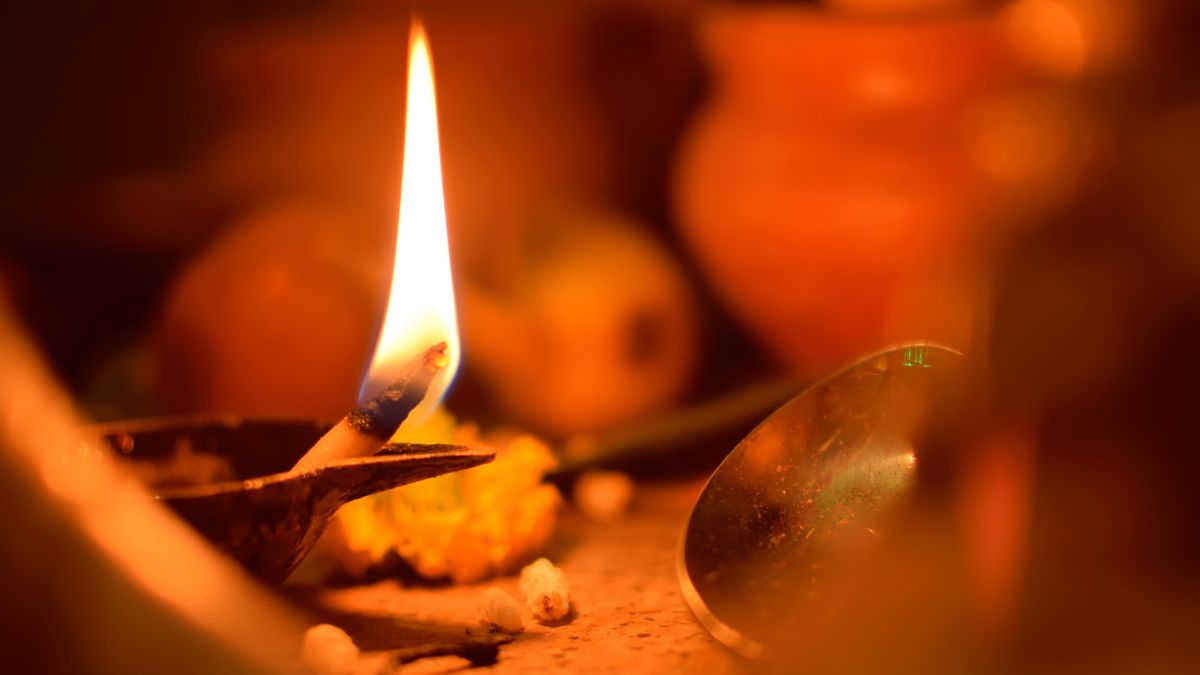- By Kashish Rai
- Wed, 10 Apr 2024 12:21 PM (IST)
- Source:JND
Chaitra Navratri began on 9th April 2024 and will go in till 17th April 2024. During the Navratri festivities, one of the most significant customs is lighting an “Akhand Jyot”. As it is believed to drive out darkness from the body and mind, this act has great symbolic and spiritual meaning, signifying the expulsion of darkness from one's life. Keeping the Akhand Jyoti burning for the entire nine days of Navratri is very auspicious. The continuance of the flame is said to call upon Mother Durga's blessings and provide pleasure, serenity, and prosperity to the family.
Significance Of Lighting Akhand Jyoti During Navratri
"Akhand" signifies continuous or unquenchable, whereas "Jyot" refers to fire. During Navratri, an oil or ghee lamp is lit nonstop for nine to ten days in remembrance of the Mother Divine (Durga). The flame represents our absorption of the attributes of the Mother Divine, also known as Shakti, which include compassion, unconditional love, contentment, and generosity. Jyot is a symbol of intelligence, creative ability, and pure knowledge.
Rules To Keep In Mind While Lighting Akhand Jyot Of Mata Rani
- It is essential to light the Akhand Jyot on the first day of Durga Puja at home with pure desi ghee, mustard oil, or sesame oil. These particular oils are thought to be suitable for this sacred deed.
- Position an oil lamp on Goddess Durga's left side and a pure ghee-fueled lamp on her right. Arrange some urad dal, black sesame seeds, or rice on these lamps. The flame should not be facing south; instead, it should be pointed east, north, or west directions respectively.
- If you decide to use an earthen lamp, immerse it in water for the entire night to keep it from absorbing too much ghee or oil while the sacred flame burns.

Lighting an Akhand Jyoti is one of the most significant rituals of Navratri festivities. (Image Source: Canva)
- Keep an eye on the Akhand Jyoti while it's burning. It is considered disrespectful to the Mother Divine if you leave the jyot unattended.
- To keep the lamp going for the full nine days, you must make sure there is a significant amount of ghee or oil in it. The lamp needs to be covered with a glass chimney to keep it from going out.
- You must ask the Mother Goddess for forgiveness and light the lamp again if the jyot extinguishes at any time during the nine days.
- Avoid eating garlic, onions, and non-vegetarian food. They are fundamentally tamasic. Elevating the satva in one's body, mind, and ego is the main goal of Navratri. The one taking care of the Akhand Jyot must also observe vrat for nine days.
- It is not appropriate to blow out the lamp or use any other method to put it out if it is still burning after the nine days have passed. Rather, one should wait for it to go out on its own with patience.
ALSO READ: 25 Trendy And Unique Baby Girl Names Inspired By Mata Rani With Meanings
Benefits Of Lighting Akhand Jyot During Navratri
It is believed that lighting the Akhand lamp during Navratri brings happiness and luminescence into one's life. It removes impediments, banishes negativity, and aids in maintaining Mata Rani's blessings. Moreover, it is connected to the allure of monetary success. It is believed that worshipping Maa Durga assiduously over the nine days of Navratri will appease the Goddess and result in her bestowing onto her devotees the blessings of a happy and fulfilled life.
(Disclaimer: This is based on general public information. Jagran English does not confirm its veracity. Before adopting any measures, consult an expert from the relevant field.)

